So, you’ve just set up your brand new 29-gallon tank. Congratulations! The next decision you’ll need to make is what kind of fish you want to keep. If you’re looking for something flashy and exotic, consider adding some African Cichlids to your tank.
Since African cichlids are known for being aggressive and territorial, most of them require a minimum of 55 gallons of aquarium or larger.
However, several species are small enough to thrive in a 29-gallon tank. We’ve compiled a list of 10 of our favorite species that would be perfect for 29-gallon tanks. From these diminutive shell dwellers to brightly-colored Kribs, there’s sure to be a pair (or group) of African Cichlids that will fit both your tank and your personality.
Fairy Cichlid (Neolamprologus brichardi)
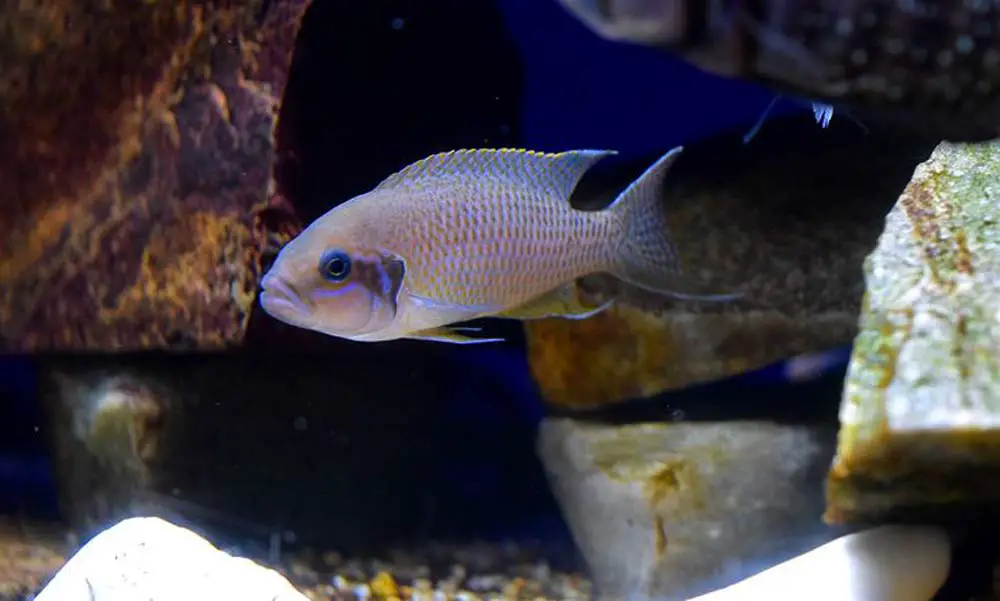
The Fairy Cichlid (Neolamprologus brichardi) was the first African cichlid introduced to the hobby. This fish is well known by cichlid lovers, as well as other fishkeepers, for its stunning appearance and relatively peaceful nature.
This fish is endemic to Lake Tanganyika and widely distributed in the northern part of the lake. It was previously described as Lamprologus brichardi but was moved to the genus Neolamprologus in 1991.
The Fairy Cichlid is a small fish, reaching a maximum size of 5.1 inches (13.00 cm). Because of their small size, they are perfect for a 29-gallon tank. This species is relatively easy to care for and makes a great choice for beginner and advanced aquarists.
Lemon Cichlid (Neolamprologus leleupi)
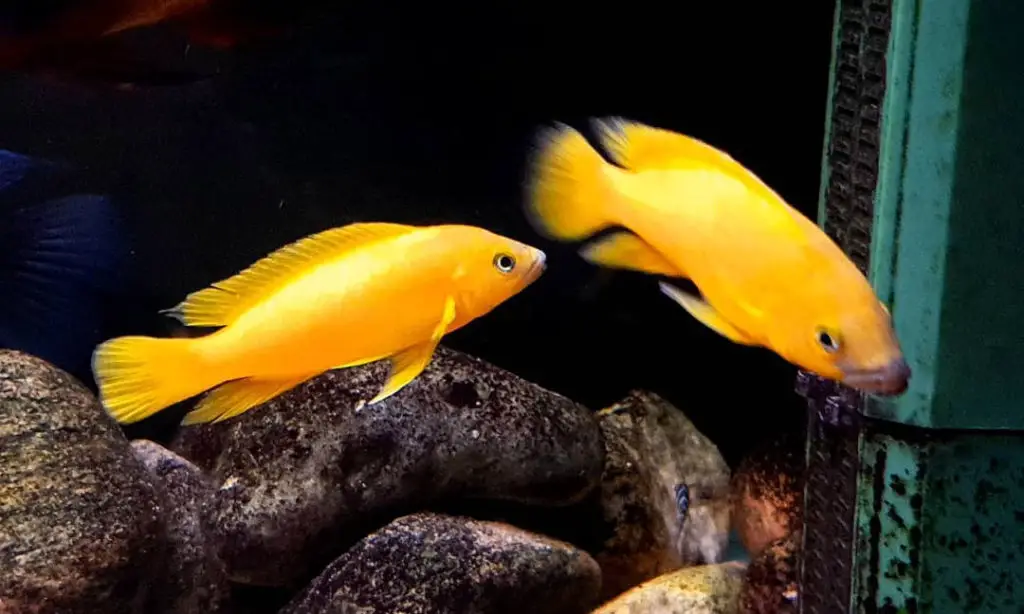
The Lemon Cichlid is a beautiful little fish that is endemic to Lake Tanganyika, renowned for its brilliant yellow coloration, but the color can vary depending on social status and the location where it is found.
This species can grow to a maximum size of 3.9 inches (9.91 cm), with males can reach up to 5 inches (12 cm) and females being slightly smaller at around 3.5″ (9 cm).
Not only do they look great and stay smaller, but they are also relatively peaceful for an African cichlid. They make a great addition to a mixed species aquarium with other small Tanganyikan cichlids.
Though Lemon Cichlids are peaceful fish, they can be aggressive and territorial with their own kind. They do best in pairs or kept singly.
Kribensis Cichlid (Pelvicachromis pulcher)
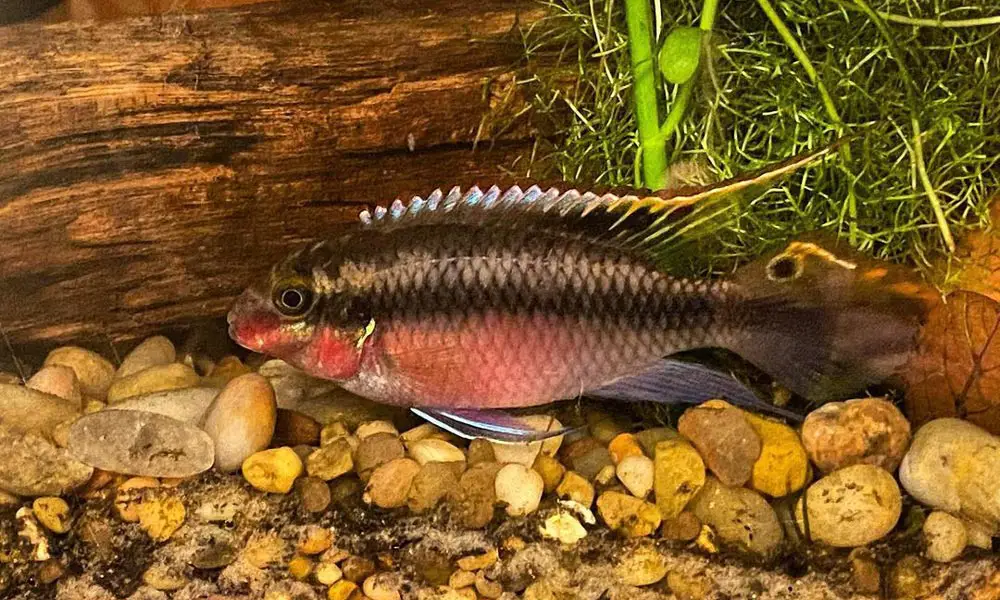
Like the fairy cichlids, Kribs are one of the first West African cichlids to be introduced into the aquarium trade – and for good reasons. They are colorful, peaceful, fairly easy to breed and make great candidates for a new hobbyist interested in keeping cichlids.
Just look at these beautiful fish, and you can see why they are so popular. Unlike most other types of African Cichlids, female Kribs are more colorful than males. They will develop a purple or brilliant cherry red belly when spawning.
Male Kribs grow larger than females and can reach 4 inches (10 cm) in length, while females grow to only 2.5 inches (6 cm). These fish can be kept in almost any tank size, ranging from 5 to 200 gallons.
Moreover, this fish is peaceful and can go into community aquariums with the most delicate fish. I have heard of people keeping Kribensis with danios, Barbs, Cory Cats, and Plecos. They are that peaceful. Of course, they will be no problem with other cichlids, including Angelfish and shell dwellers.
Shell Dwellers
Speaking of small African Cichlids, we can’t miss out on these colorful, exciting shell dwellers or shelldwellers. They use the empty shells of other mollusks as their shelters and lay their eggs in these same shells.
Most shell-dwelling species are found in Lake Tanganyika, and their popularity is due in part to their vibrant colors and interesting behaviors. Most of them are semi-aggressive since they live in a permanent hostile state with other shell-dwelling cichlids in their habitat.
Here are some of the most popular shell-dwelling cichlids for a 29-gallon tank:
Ocellated Shell Dweller (Lamprologus ocellatus)
The Ocellated Shell Dweller (Lamprologus ocellatus) has several color varieties, but the gold variety is the most popular. These fish are small, only reaching a maximum size of 2.3 inches (5.8 cm).
These fish are considered semi-aggressive fish species. However, they are known to be territorial and will defend the shells they live in. Some owners report that these fish even attack the hands of their owners when they reach into the aquarium.
This cichlid likes to dig, so make sure you have a deep sandy substrate that allows them to display natural behavior. They also need plenty of shells in the tank to hide in.
Brevis Shell Dweller (Neolamprologus brevis)
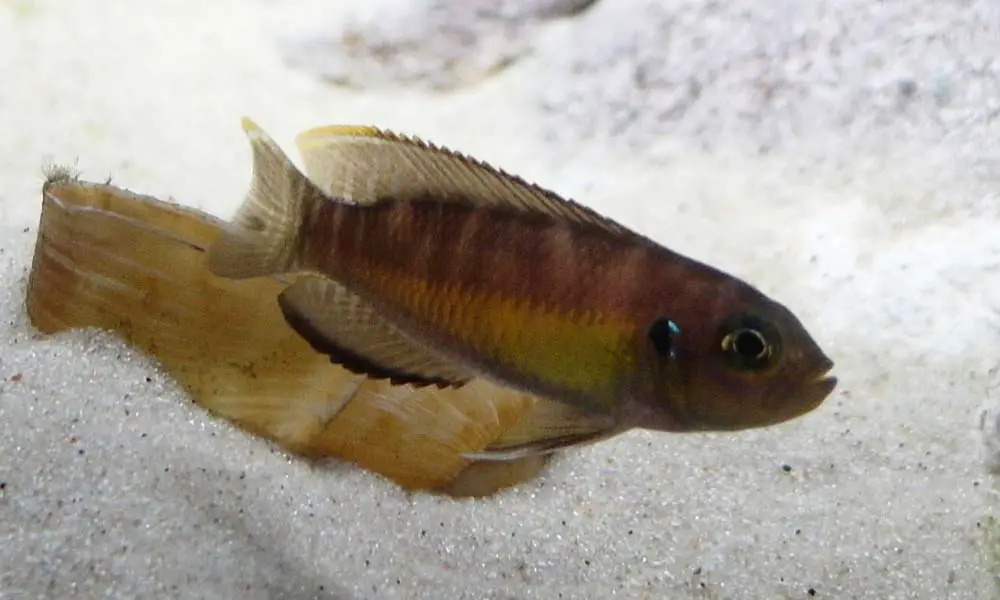
Brevis have a similar elongated body shape to Ocellatus, as well as a bulldog-like face. They are also small in size, males reaching a maximum size of 2.5 inches (6 cm), with females even slightly smaller at around 1.5″ (4 cm).
They are not known to be as aggressive as some of the other shell-dwelling cichlids, but when protecting their home shells. Unlike other species, a paired Brevis will often share the same shell.
In the wild, they spawn in abandoned shells of Neothauma tanganyicense snails; in fact, they don’t have other shell choices. In the aquarium, they will do the same if you provide them with plenty of shells. Of course, you do not have to provide them with the same shells of the Neothauma tanganyicense.
You can keep Brevis singly or in pairs. Two pairs can be kept in a large tank, but you need to provide them with plenty of shells and hiding places.
Zebra Shelldweller (Neolamprologus similis)
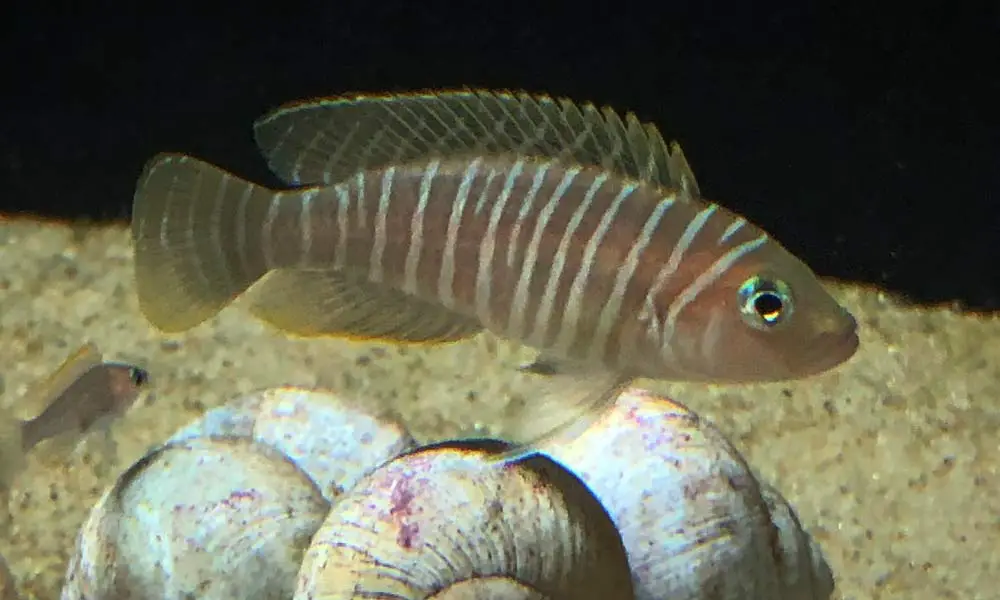
As the name would suggest, the Zebra Shelldweller take on distinctive brown stripes running down the length of their body. They are one of the smaller shell-dwelling cichlids, only reaching a maximum size of 2 inches (5 cm).
It’s hard to tell female Zebras from males since they both have similar stripes. It’s not a common cichlid due to its slow growth rate and small mature size.
They will form small harems. The male will do its best to protect his territory, especially during spawning.
Multi Cichlid (Neolamprologus multifasciatus)
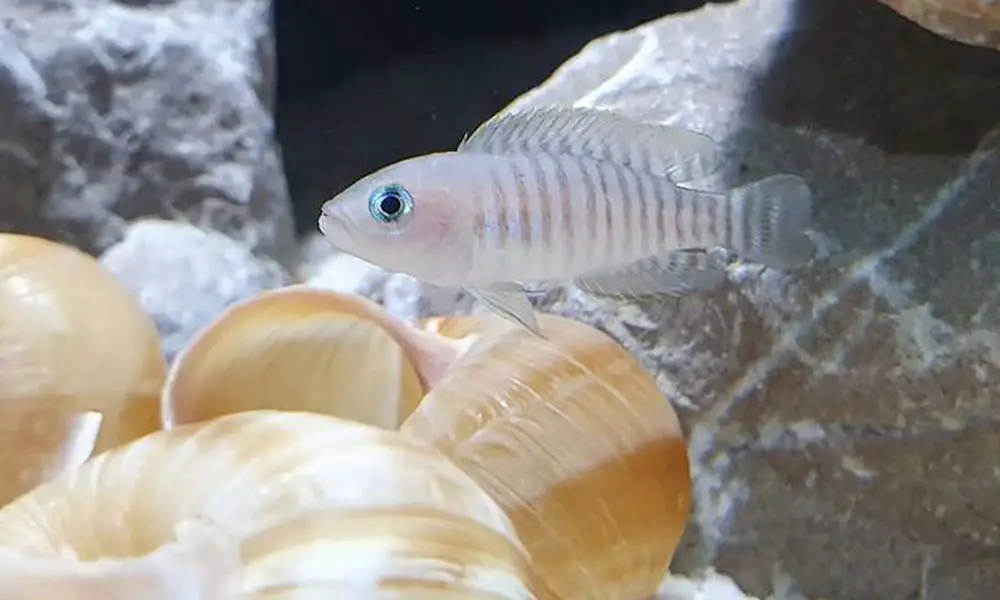
Multis look almost exactly like similis, except these stripes only start behind the gill plate. They are more common in the aquarium trade. If similis are not available, then Multis make a good substitute.
This fish is the smallest of all Lake Tanganyika cichlids or even the smallest of all cichlids, only growing to a maximum size of 1.2 inches (3 cm).
Compared with others, Multis have a deep affinity with shells – they don’t abandon their home shells instead of burrowing sand to move them.
Hecqui Cichlid (Lepidiolamprologus hecqui)
The Hecqui Cichlid (Lepidiolamprologus hecqui) was described as Neolamprologus hecqui, one of the less known species in the aquarium trade.
These fish are slightly larger than most shell-dwelling cichlids, reaching a maximum size of 3.1 inches (8 cm).
The Hecqui is shy by nature and will spend most of its time hiding behind shells or rocks. They are not aggressive cichlid and can be kept with species in Altolamprologus, Julidochromis, and other Neolamprologus if plenty of space is provided.
Golden Julie (Julidochromis ornatus)
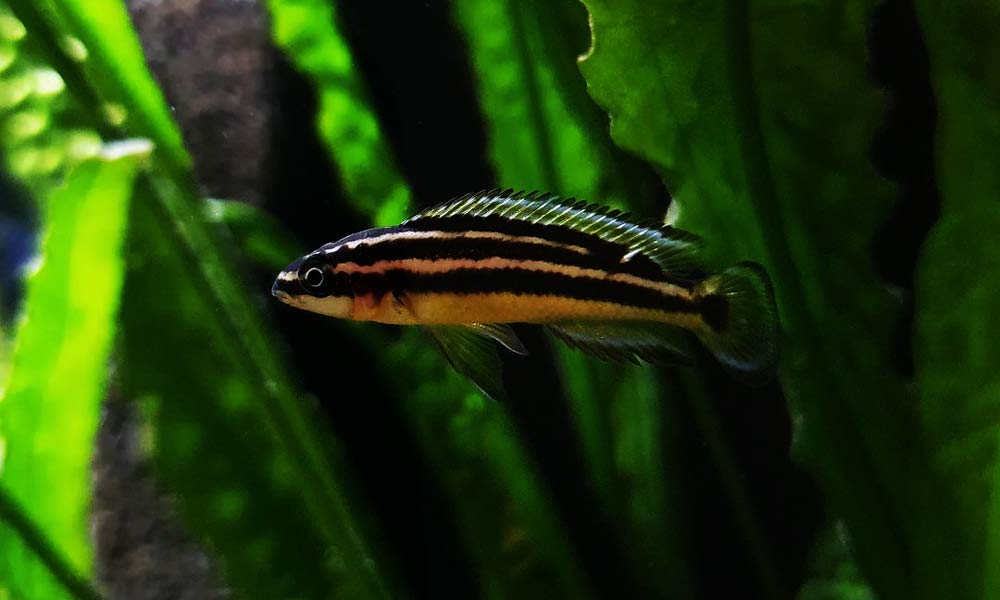
Golden Julie or Ornate Julie is a beautiful Tanganyikan cichlid species that sport a mix of interesting colors and patterns. The shape of their bodies is somewhat torpedoed with three horizontal black lines that run from the gill cover to the base of their tail. A notable large black spot can be found on the caudal fin in comparison to other Julies.
These fish are rock-dwelling species. They are found in rocky areas of the lake, where they feed on microorganisms. Sometimes, they hover upside-down below a rocky outcrop.
One of the smaller “Julies.” They max out at 3.1 inches (8 cm).
In a home aquarium, rock-dwelling fish should be kept in a Lake Tanganyika biotope set up – a sandy substrate with plenty of rocks and caves filling much of the space.
Masked Julie (Julidochromis transcriptus)

Last but definitely not least African Cichlid on our list is the Masked Julie. These are the smallest Julidochromis species, with the adults only reaching a maximum size of 2.8 inches (7 cm). This is barely half the size of its close relatives.
The body shape of the Masked Julie is similar to that of other Julies, but the black markings on their bodies are more distinct. Several color pattern variations of the Masked Julie exist in the wild, depending on their geographic location.
This fish is a great choice for both the intermediate and advanced cichlid keepers. It is moderately easy to care for and is not as aggressive as some of the other Julies.
Time To Hit The Store
We hope you enjoyed this article on African Cichlids for a 29-gallon tank. As you can see, there is a lot of variety in both appearance and behavior among these fish.
No matter how experienced you are as an aquarist, there is sure to be an African cichlid species that is perfect for your 29-gallon tank. So what are you waiting for? Get out there and start shopping!
If there are any unique fish you think we missed, let us know in the comments below. And don’t forget to share this article with your fellow fish-keeping friends!
